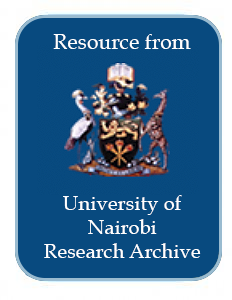Resource information
The elements of Land Administration in Kenya are very fragmented and independently operated
within the Ministry of Lands. During institutional reform there is opportunity to provide a much
more integrated Land Administration service to the citizens, especially at the district level
through the formation of ‘one-stop-shops’, through the integration and rationalization of the
existing land administration and land rights delivery systems.
This project report highlights the benefits offered through the application of GIS in management
of community based land transactions. Applying GIS technology in the management of land
transactions enables information to be managed more effectively and productively, and therefore
providing the opportunity to undertake new tasks. Improvements are shown in the capture,
storage, accuracy, completeness, integration, maintenance and analysis of data, which
consequently improves the quality and dissemination of information. However, GIS has complex
software systems, which require experience and expertise to utilize effectively. Customizing GIS
provides a solution, by offering user friendly interface for the operations and functions of a GIS,
which reduce the skills required for obtaining their output.
The study involved assessment of land transactions operations in Survey and Land Registration
departments of the Ministry of Lands, in Kirinyaga Central District. The results of this
assessment and the user needs and requirements established, were used to the development of
this system.
The project objectively addressed the land issues through development of a GIS database that
the community can use to find relevant land information. The database gives information about
qualified professionals within the district as well as land buyers and sellers by querying the
database. This is aimed at eliminating quacks who act as land surveyors or land management
agents. The database allows spatial data analysis for instance, deriving a suitability map about
land parcels locations according to requirements of the interested buyer or seller. The system
answers queries on land information on parcels based on the user needs.
The digital map database was developed through manual digitization process of analogue maps
that involved: Entering the spatial data, Entering the attribute data, Spatial and attribute data
verification, and linking the spatial to the attribute data. The results were analyzed through
querying of the database and derivative mapping for generation of the suitability maps based on the user needs and requirements.


